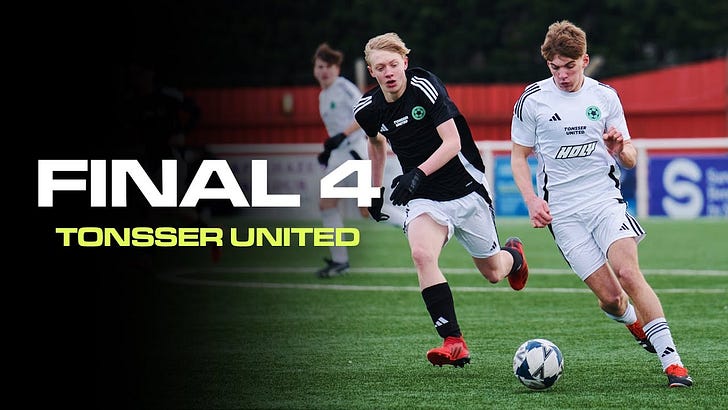One of the issues in MLB is that wearable technology has been resisted for the better part of a decade. I spent so much time fighting with teams, agents, and the player's association during my time at Motus that I'm glad Driveline has had more success getting it out there. However, I was recently asked what technologies I think could help baseball. To me, it's not GPS or movement tracking, though I think that some of the Statcast stuff is interesting. (More interesting than useful.) I think heart rate tech in real time — by an accurate technology — would be useful, but also a great tool to show on broadcasts. Imagine Jason Benetti looking down and seeing the opposing third baseman's heart rate is rising in the box, knowing he's likely to face Tarik Skubal with two outs. Data plus snark would be epic. The drama doesn’t need to be manufactured, it would just be enhanced by new information.
The frustrating part is that in other sports, these metrics aren’t just accepted — they’re expected. In the NBA, Catapult units and Polar heart rate systems are standard operating procedure. Across the Premier League and Bundesliga, STATSports provides second-by-second physiological load data to coaches who actually use it. Even the NFL, which has its own history of tech friction, now experiments with internal temp sensors and cognitive feedback systems during camp. Formula 1 teams have a real-time data war room 5,000 miles away from the track that can tell you a driver's pulse, grip pressure, and emotional state as he pulls 4G into a corner. Meanwhile in baseball, we’re still debating whether a guy can wear a motion sensor on his throwing arm without it showing up in arbitration.
Part of this is about trust or the lack of it. The players don’t trust teams. Teams don’t trust agents. And nobody trusts the league. Wearables that might flag fatigue or injury risk are too easily seen as evidence, not guidance. When we launched the Motus sleeve, it could detect stress loads building over time. We thought we were preventing injuries. Some front offices thought we were giving players a way to prove they shouldn’t pitch. One pitching coach asked me if the data could be scrubbed after a bad outing. That’s the culture we were up against.
Yet somehow, Statcast has become gospel. The early radar-only system gave us spin rate and launch angle, but the newer Hawk-Eye platform can do even more — limb tracking, head movement, bat orientation - and it’s only getting better as cameras and our ability to deal with data grows. The feeds exist. The problem is that most teams don’t have the infrastructure to interpret them. And even fewer can deliver those insights to players in real time. As one biomech director told me recently: “The problem isn’t the lack of tech. It’s the gap between the data and the dugout.”
Other sports are shrinking that gap. In tennis and golf, athletes use neurofeedback tools like Sens.ai or NeuroTracker to monitor cognitive drift during high-pressure moments. In endurance sports and motorsports, tools like Moxy track muscle oxygenation—flagging when fast-twitch fibers are no longer getting the oxygen they need. That kind of feedback, if applied in-game, could change the way we think about bullpen usage or swing decisions in a long at-bat. These tools aren’t hypothetical. They’re here. And baseball, as usual, is watching from the clubhouse doorway, waiting to be told it’s safe to come out.
Even emerging platforms like ArmCare, which offer accessible strength diagnostics and fatigue markers, are still being adopted piecemeal. They’re being used in indy ball. In D-II programs. Sometimes in MLB camps — until they get shelved by someone who “doesn’t want to overwhelm the player.” But what overwhelms a player more than not knowing why he suddenly can’t get the fastball past 92?
The road forward isn’t paved with more sensors. It’s paved with smarter systems. AI tools that don’t just show us stress or fatigue, but help us make better decisions with it. The challenge is connecting the dots quickly, clearly, and in language the athlete understands. If a guy’s movement signature is degrading, I don’t want to know it in a quarterly report. I want to know it before he walks out for the sixth inning.
And here’s where it gets interesting: for smaller-market teams, this might be the opportunity they’ve been waiting for. You don’t need a seven-figure biomechanics lab. You need a couple of force plates, a good data pipeline, and the guts to act on what you find. Teams like Tampa Bay, Cleveland, and Baltimore are already proving that. Use tools like Moxy or Kinatrax. Partner with Driveline or Reboot Motion. Test with S2 and NTangible. Don’t build a tech stack, rent one. Build workflows, not monuments. Well, build workflows, then build statues commemorating that championship!
One assistant GM recently told me, “We can’t outspend the Dodgers, but we can out-decide them.” That’s almost the right approach. There’s no rule that says you have to be the first to build something. You just have to be the first to use it well. Teams that have been smart and agile before have to do it again, and more. Every team is doing what the Rays did ten years ago, but who’s doing what no one else is doing now? Using 2025 technologies could sure help win championships in 2026.
So what kind of tech could help baseball? The kind that builds trust by being accurate. The kind that disappears when it’s working and speaks up when it’s needed. The kind that doesn’t replace coaches, but gives them better questions to ask. Heart rate. Focus. Load. Readiness. Clutch. These aren’t theories. They’re facts waiting to be tracked. The only question left is: who’s going to put it all together and gain one of the last advantages left in sport?




